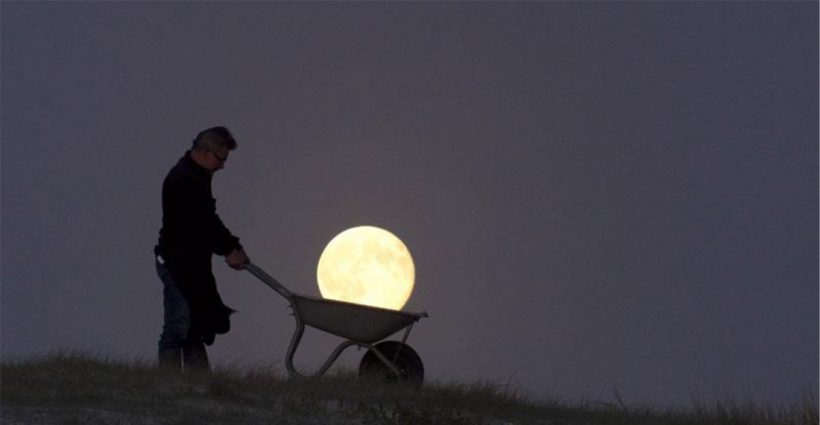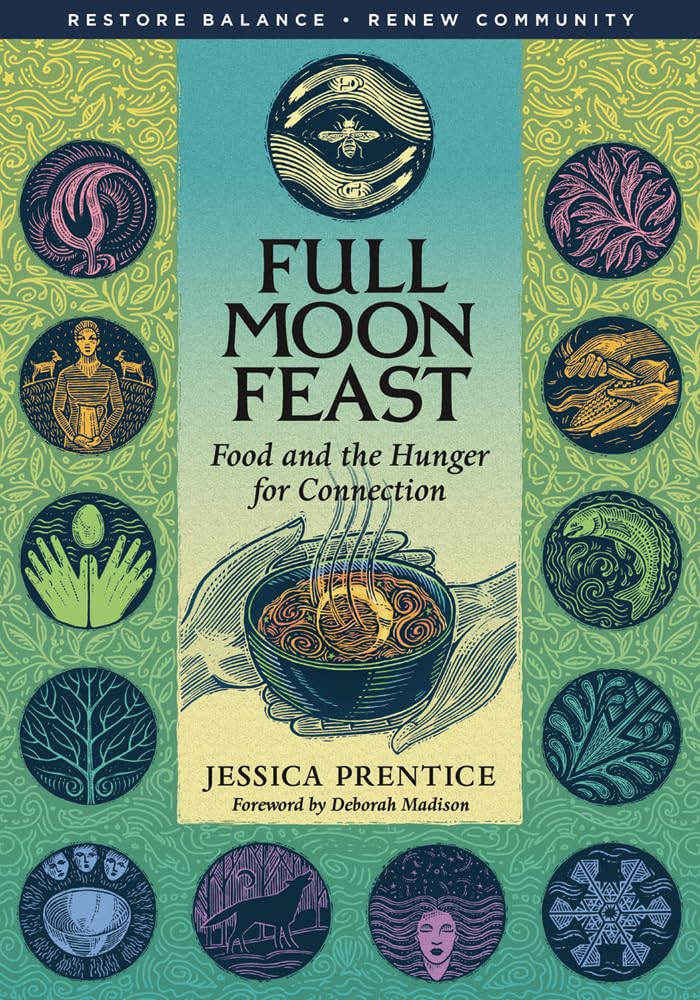designed for the way women work.

The Hunger Moon and Other Moons
Category: Presenting "The Curious Gardener"
In The Old Farmers Almanac there is a name given to each full moon of the year. These are mostly adapted from early Native Americans who kept track of the passing seasons and tied their calendar to the full moons. The Hunger Moon, which is Saturday February 24th this year, falls at the end of winter when game is scarce and predators are particularly hungry. Names for the moons varied between different indigenous peoples, but they carried similar meanings. The Hunger Moon was also known as ‘Little Famine Moon’ and ‘Bony Moon’, and in those days the threat of famine after a long winter was real, for people as well as for animals.
I first learned about the Hunger Moon when we had chickens and one of them was carried away by a fox in broad daylight right under my nose. It was during a Hunger Moon and a friend told me the fox was likely very hungry.

We are giving away a copy of Jessica Prentice’s book Full Moon Feast, Food and the Hunger for Connection, which uses the lunar calendar to talk about food. Explaining her fascination with moon names she says, “As I started to read about the moon names of different cultures I was struck by how the names reflected something profound about their culture and their food system”. She added, “abundance of food and scarcity of food are both cyclical.” People in pre-industrial times were acutely aware of this and their moon names reveal this. Most of us, on the other hand, have lost our connection to those cycles.
Here are the 12 moons listed in Jessica’s book. Click here to enter our giveaway for a soft cover edition of her book, where you’ll find longer descriptions of each moon. Entries must be received by Sunday February 25th at midnight!
Hunger Moon (February)– The late winter lunar cycle was called The Hunger Moon by many different peoples in many different languages, but always for the same reason. When you depend on the land where you live for food, and the land has been frozen for months, you are likely to be hungry.
Sap Moon (March)— The first drops of sweet nectar from tree taps was living proof that nature is in a constant state of change and flux, and that there is a lot going on underneath the surface. There are forces moving that we cannot even begin to perceive.
Egg Moon (April)— On old-fashioned family farms, hens lay fewer eggs during the winter when nights are long and days are short, and more eggs when there is more daylight. The Egg Moon means that spring is here, the days are longer, and the hens are laying more and more eggs.
Milk Moon (May)— The cows have had their calves and are feeding on the rapidly growing spring grasses in the fields.
Mead Moon (June)– Mead was the Norse and Old English version of a drink fermented from honey, and though many modern Americans have heard of it, few have tasted it.
Wort Moon (July)— Wort is the old fashioned, Old English word for herb. Late summer was the time of year when medicinal and culinary herbs would be harvested, dried, and stored for the winter. Tinctures would be made, herbal ales would be brewed, and medicinal lozenges, jellies, candies and spirits would be processed. It was a time to refill the medicine chest for the year.
Corn Moon (August)— It is the time of year when grain is ripening in the fields, readying for harvest. Throughout much of the United States the plant zea mays is being harvested and Americans are enjoying plenty of their beloved sweet corn.
Harvest Moon (September)– The moon appears particularly bright and it rises early in the evening. This allowed farmers to keep working at their harvest into the night. (Source: The National Geographic Society)
Blood Moon (October)— The name comes from the fact that small farmsteads would slaughter meat for winter in the fall. It was the time of year when hogs would be fat , having benefited from harvest season and all the other richness of the farm’s agricultural year.
Snow Moon (November)— In 16th century England it was the time of year when villagers of the British Isles would expect to see their first snowfall of the winter.
Moon of Long Nights (December)— In this moon we will move through the winter solstice, the longest night of the year.
Wolf Moon (January)– This was a time of year when country folk and farmers could hear the hungry winter howls of wolves in the distance, and begin to feel the metaphorical wolf at the door of their farmhouses. Either the stores of food were still well-provisioned from the harvest, or they were beginning to run low.
Photo Credit: Laurent Laveder



Very interesting article. Enjoy learning about history & life long ago.
Beautiful book!
Have 13 Moons on Turtles Back by Joe Bruchak and cherish also
Illustrated by Thomas Locker who was my neighbor and friend
Love the interpretations of nature and all that is through out the cycles on this amazing planet earth